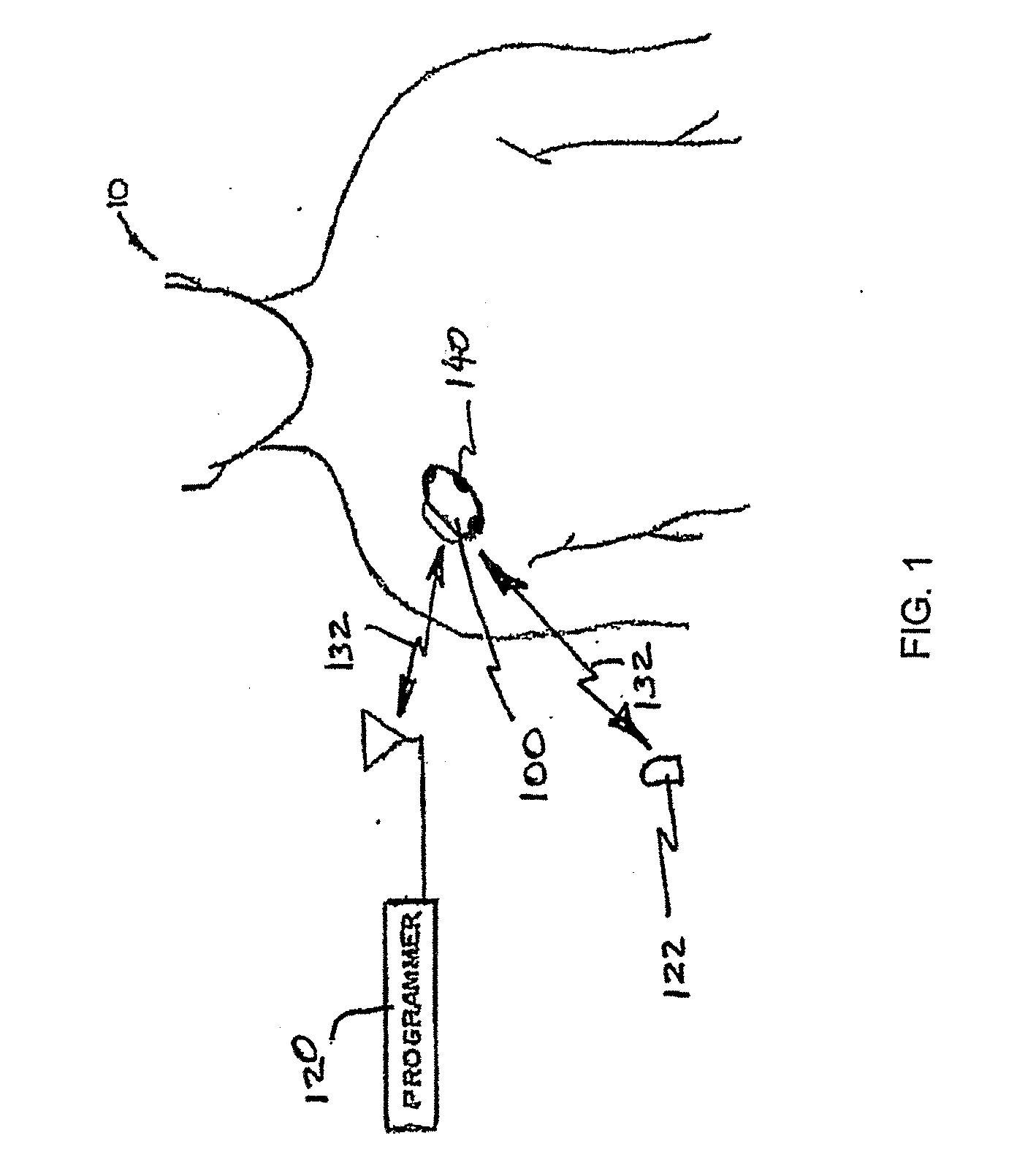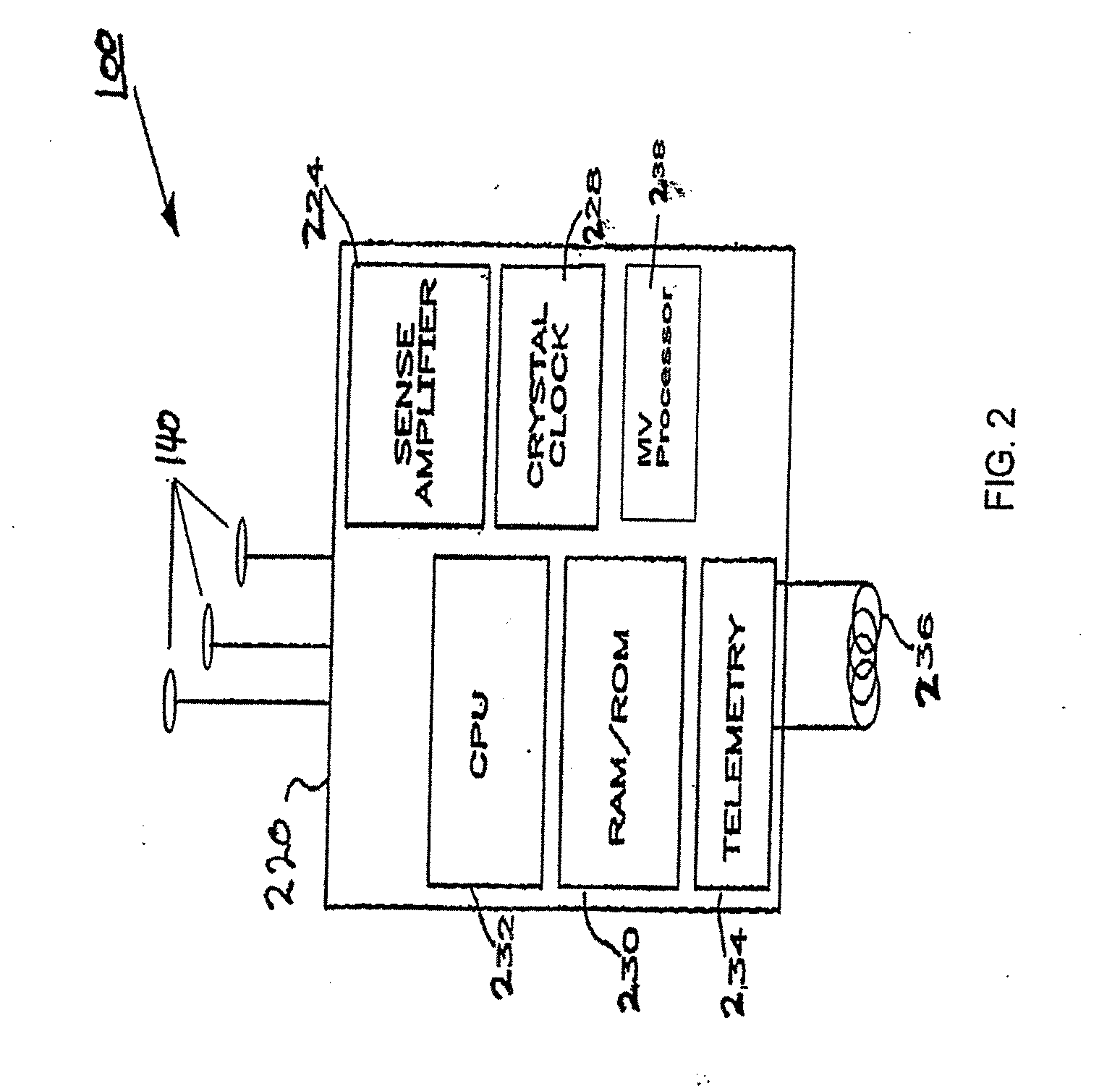Peak data retention of signal data in an implantable medical device
a medical device and signal data technology, applied in the field of implantable medical devices, can solve the problems of epilepsy affecting a person's employability, degrading life, psychosocial life, etc., and achieve the effect of reducing the risk of epilepsy, and reducing the life expectancy of patients
- Summary
- Abstract
- Description
- Claims
- Application Information
AI Technical Summary
Benefits of technology
Problems solved by technology
Method used
Image
Examples
Embodiment Construction
[0039] The following description discloses techniques for selecting, storing and reporting data associated with physiologic signals that may be further associated with a neurological event. These techniques are suitable for use within any implantable medical device system including, but not limited to, a core monitoring device, a full monitoring device, and / or a combination monitoring and treatment device (e.g., involving brain, respiration, and / or cardiac physiologic signals, discussed below). For example, a core monitor system may consist of ECG and respiratory inputs, a full monitor system may consist of ECG, respiratory and EEG inputs, a monitor / treatment system may include brain, cardiac inputs and phrenic nerve stimulation in various combinations.
[0040] In an embodiment, the invention is implemented within an implantable neurostimulator system, however, as already discussed, those skilled in the art will appreciate that the techniques disclosed herein may be implemented gener...
PUM
 Login to View More
Login to View More Abstract
Description
Claims
Application Information
 Login to View More
Login to View More - R&D
- Intellectual Property
- Life Sciences
- Materials
- Tech Scout
- Unparalleled Data Quality
- Higher Quality Content
- 60% Fewer Hallucinations
Browse by: Latest US Patents, China's latest patents, Technical Efficacy Thesaurus, Application Domain, Technology Topic, Popular Technical Reports.
© 2025 PatSnap. All rights reserved.Legal|Privacy policy|Modern Slavery Act Transparency Statement|Sitemap|About US| Contact US: help@patsnap.com



